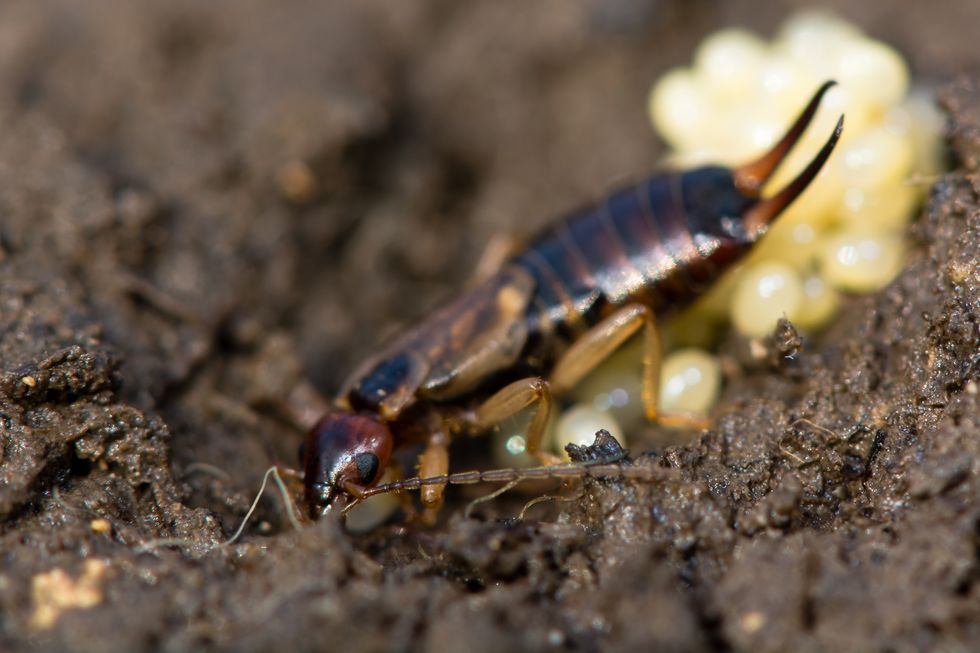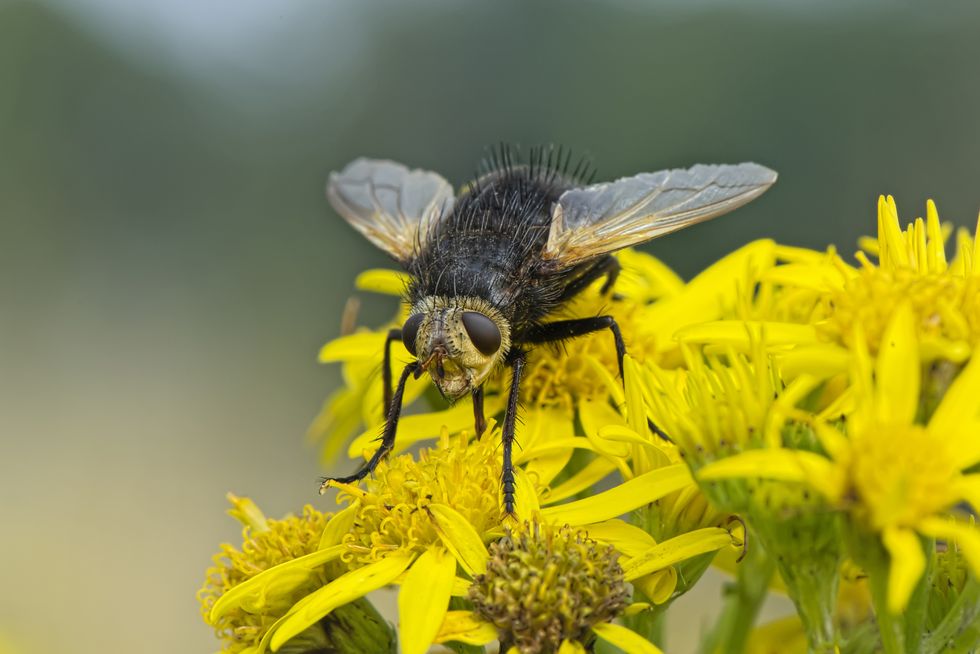Earwigs can be a pest — and not just because of that scary old wives' tale that they will crawl into your ear and lay eggs (they won't!).
Earwigs are actually quite contradictory in that they can be both a garden pest and helper at the same time. They're beneficial in compost piles and as predators because they eat nuisances like aphids, mites, and undesirable nematodes, as well as other insect larvae. Earwigs are actually omnivorous, and primarily feed on decaying organic matter as well as those pest insects.
However, earwigs also unfortunately eat ornamental and vegetable plants, particularly dahlias, zinnias, butterfly bush, hollyhocks, lettuce, strawberries, potatoes, roses, and seedling beans and beets, as well as the silk of sweet corn. In gardens and greenhouses, they chew irregularly shaped holes in plant leaves and flower petals, tunnel into flower buds, and also consume seedlings.
Earwigs can also wreak havoc outside of the garden because they're attracted to moist areas around and inside homes. They can become serious pests when they come indoors, and also when outdoor populations get out of control and do major damage on your garden.
Found throughout North America, these glossy, flattened insects are brown to black in color and measure ½ to 1 inch long. You can identify earwigs by their pair of curved pincers or forceps emerging from the tip of the abdomen. But don't worry — they rarely pinch.
Adult earwigs may or may not have wings, but they rarely fly. Larvae resemble adults. The European earwig (Forficula auricularia) is most problematic in northern areas; the ringlegged earwig (Euborellia annulipes) is predominant in the South.
Get some tips below on where to find earwigs, and how best to control their population size.
Where Earwigs Hide
Earwigs are nocturnal; they hide in cool, moist places during the day and feed at night. Earwig damage mimics damage from caterpillars and slugs, so be sure you've identified the real culprits by checking for feeding earwigs on your plants after dark.
Earwigs are unusual among insects in that the female fusses over her eggs and nymphs, and uses her pincers to protect them. Overwintering adult earwigs lay clusters of round, white eggs in the soil in late winter; larvae, which resemble adult earwigs, hatch in spring. Adults overwinter under garden debris, stones, and boards as well as in soil.
How to Trap Earwigs
To trap earwigs, you can fill cat food cans (or other similar cans) with ¼ inch of oil (preferably fish oil) and sink them into the ground near plants. Empty them every day.
You can also set out some crumpled, damp newspaper, lengths of old hose, cardboard filled with straw and taped shut at one end, or boxes with small holes cut in the sides and baited with oatmeal. Place these earwig "traps" near plants and dump the contents into a bucket of soapy water in the morning.
Another option is to simply place a light-colored cloth beneath an infested plant and shake or tap the branches. The earwigs should fall onto the cloth and can then be disposed of.
How to Control Earwig Overpopulation
If you are seeing a lot of earwigs, or have had a problem with them in your garden before, you can simply sprinkle a 2-inch-wide circle of diatomaceous earth around beds or the base of plants where earwigs commonly travel; reapply after it rains.
You can also apply the beneficial nematode Steinernema carpocapsae, which is an alternative to chemical pesticides.
Clean up any garden debris and mulches, especially around the foundations of your home, since moist areas serve as daytime hiding spots for the nocturnal earwigs and can lead to them invading your home. You can spread dry gravel as mulch around your home instead.
Earwigs are also attracted to lights, so eliminate or reduce lighting around the foundation.
How to Call in an Earwig Predator
The earwig's only insect predator in North America is the tachinid fly. You can attract and encourage this fly in your garden by planting alyssum, calendula, dill, and fennel.















